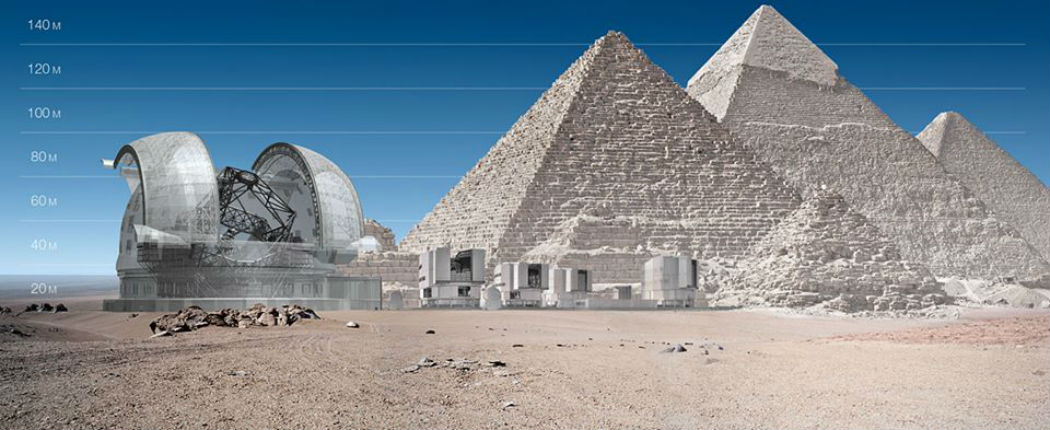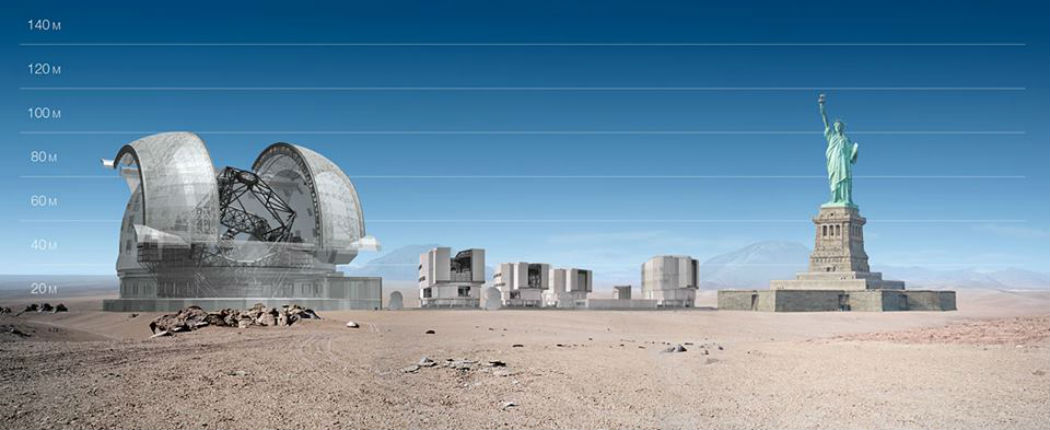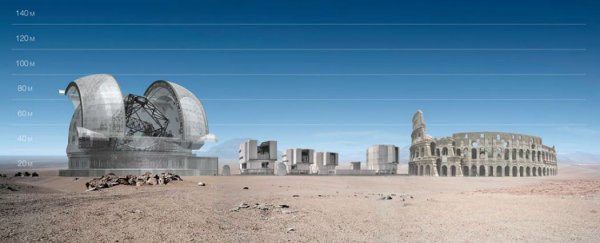You've probably never really thought about how big the European Space Organisation's (ESO) Extremely Large Telescope is actually going to be, but that's why they've put together these awesome infographics to show it to scale, alongside the world's largest existing telescopes, plus the Pyramids of Giza, the Colosseum in Rome, and the Statue of Liberty.
The colossal structure is being built at an altitude of 3,060 metres atop the Cerro Armazones mountain on the Chilean Coastal Range, which runs along the Pacific coast of South America parallel to the Andean Mountains. The telescope will feature a 39-metre main mirror, a 100-metre-high hemispherical dome, and will harvest 13 times more light than any other telescope in operation right now.
Approved for construction in 2012, which only began late last year, the European Extremely Large Telescope (E-ELT) is expected to be operational by 2024. Once fired up, it will be "the world's biggest eye on the sky", says the ESO, capable of showing us cosmic phenomena our current technology doesn't even come close to.
"The E-ELT will gather 100 million times more light than the human eye, eight million times more than Galileo's telescope, and 26 times more than a single Very Large Telescope Unit," says Attila Nagy at Gizmodo. "The E-ELT will gather more light than all of the existing 8m-10m class telescopes on the planet combined."
Describing the technology on their website, the ESO say their new telescope will be able to cut through atmospheric distortions at an unprecedented level to capture images that are 16 times sharper than those from the Hubble Space Telescope - which has the benefit of being up there, in orbit. With the potential to tell us a whole lot more about super-massive black holes, distant stars and planets, and the birth of new galaxies, this telescope is gonna change everything.
 Credit: ESO
Credit: ESO
 Credit: ESO
Credit: ESO
